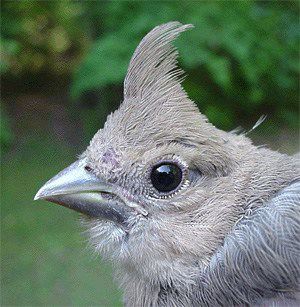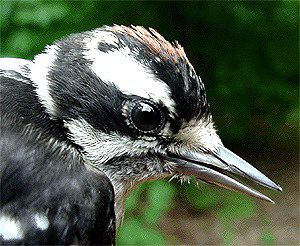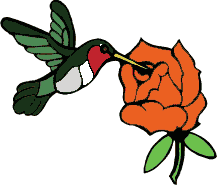|
|
|||
|
THIS WEEK at HILTON POND |
|
Due to installation of a new computer network, operating system, and software, we're a tad behind in posting new editions of "This Week at Hilton Pond." The inevitable glitches occurred and the learning curve has been a bit steep, but soon we'll be back in the groove and humming along merrily with the fancy new set-up. During the changeover we HAVE been banding birds, however, so we thought we'd post a few close-ups and "mug shots" of species captured during the week of 1-7 July 2002, all of which breed at Hilton Pond Center.  The adult male Blue-gray Gnatcatcher (above) has a prominent black eyebrow that is absent in females and juveniles. A gnatcatcher nest, adorned with lichens, resembles that of a Ruby-throated Hummingbird, but it is much taller and larger in diameter.
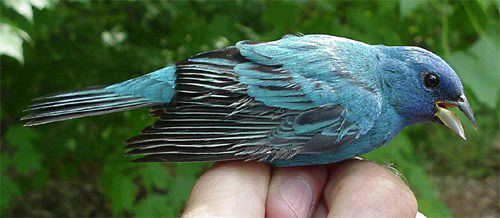 An adult male Indigo Bunting (above) shows shades of blue that are nearly indescribable, even with a color chart. The blue sheen of the darker head blends into a lighter hue on the wings and back, while the tail and wing feathers are black with blue edging. Young birds have nondescript light brown plumage, as do adult females that may show an occasional blue cast to various feathers. The two-tone bill--black above and bone-colored below--is prominent in both sexes.
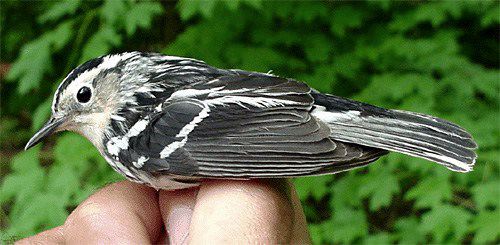 The name "Black-and-white Warbler" says it all for this species, which is sometimes confused with woodpeckers because of its color and habit of gleaning insects from bark. It has large feet for a warbler, all the better to hold onto vertical branches and tree trunks. Young birds and females sport a grayish cheek patch that is black in the adult male.
If you enjoy "This Week at Hilton Pond," please help Support Hilton Pond Center for Piedmont Natural History. It's painless, and YOU can make a difference! You may wish to consult our Index of all nature topics covered since February 2000. |
||||||

